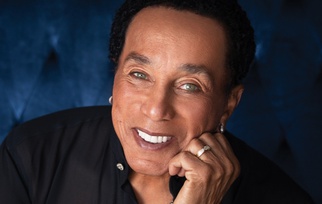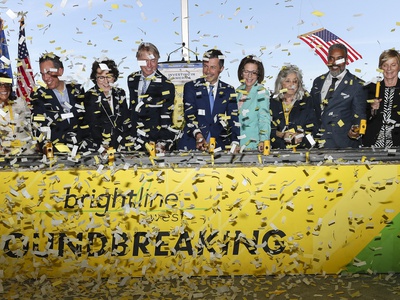Stefani Evans
- « Older
- Newer »
Story Archive
- Maps provide another layer of knowledge
- Wednesday, Oct. 21, 2009
- I'm a visual learner.
I learn best when I can picture the topic under discussion. When I want to learn about places I turn to maps. Maps provide visual tools that enable me to learn about a locality. - Nicknames can offer clues to past culture
- Wednesday, Oct. 14, 2009
- Nicknames complicate our searches. We come to know nicknames based upon shortened versions of given names, and we can usually "translate" such familiar diminutives. For example, we know that Peggy may (or may not) be short for Margaret, Molly for Mary, Chuck for Charles, and Kent for Kenneth.
- Memorial stones don't always offer solid proof
- Thursday, Oct. 8, 2009
- We make a lot of assumptions about our ancestors and their burials — oftentimes we’re wrong.
- Dual citizenship may be possible for Italians
- Wednesday, Sept. 30, 2009
- The Totaros are now dual citizens of Italy and the United States. Lorenzo Totaro and Maria Guiseppa Labanca, Italian citizens born in Terranova di Pollino, Basilicata, immigrated in the 1890s and married in New York City Dec. 27, 1900.
- Time and tradition can burnish the facts
- Wednesday, Sept. 23, 2009
- Sometimes researchers in different places have different ancestors who share a claim to fame. Can we determine which, if either, claim is valid?
- New York's 400th party is our party too
- Wednesday, Sept. 16, 2009
- New Yorkers are having a party, and we're invited. The state celebrates 2009, and here's why: 400 years ago Henry Hudson captained a Dutch East India Company expedition up the river later named in his honor; Samuel de Champlain discovered the lake that bears his name; and 200 years ago Robert Fulton advanced transportation technology when he first traveled up the Hudson in his steamboat. You can follow anniversary events at the Hudson-Fulton-Champlain Quadricentennial Web site.
- Words matter; wield them with precision
- Wednesday, Sept. 9, 2009
- "She's wonderful, she's marvelous, she's fabulous, she's beautiful."
So sang Peter Noone of Herman's Hermits as he was "Leaning on a Lamp Post" in 1966. Noone wasn't the first fellow to pine at the lamp post and wait for a certain little lady to come by. Noone's words reveal more about his vocabulary than they do about the object of his devotion. George Formby originally composed the song in 1942 for the musical, "Me and My Girl." Formby's more sophisticated phrasing follows: "Oh she's resolutely dutiful and super-strong and beautiful." His words conveyed more. - Editing makes a difference
- Wednesday, Sept. 2, 2009
- How do we know when our work is complete?
Our field's top genealogists preach about letting one's work age before performing final edits. That advice has helped me catch many sentences, paragraphs, and articles that do not say what I thought they did. When I don't take the time to edit work properly I usually regret it. Under the best circumstances I perform several types of edits before I call a written piece "final." - Centenarian has seen a number of changes
- Wednesday, Aug. 26, 2009
- Catharine Ryan of San Francisco will celebrate a century of living on Aug. 31.
- Tally marks can point us in right direction
- Wednesday, Aug. 19, 2009
- Census takers named heads of household only in U.S. censuses from 1790 through 1840. They indicated members of each household by tally-marks according to age grouping, sex, and whether they were white or free blacks. We can use these census categories to follow families and migrations and estimate date ranges of death for parents and ranges of birth for male and female children. Joseph Allen, father of Leah and Mary Allen, demonstrates how tally-marks matter.
- Probate records can help provide information
- Wednesday, Aug. 12, 2009
- To a genealogist, probate is a beautiful thing.
- Different tools can help unearth more recent data
- Wednesday, Aug. 5, 2009
- We can research late-20th century individuals. We use the same methods we employ when we research earlier eras. We simply use different tools to pry loose the data. This column explores a few sources that can provide rich data from the not-so-distant past.
- Naming patterns offer clues, but be careful
- Wednesday, July 29, 2009
- Naming patterns can provide powerful clues, but they can also be frustratingly misleading.
- Week-long convention had valuable information
- Wednesday, July 22, 2009
- I went to Washington, D.C., and I didn’t get a lousy T-shirt.
But I did pick up a lot of information. - Targeted biographies add layers of knowledge
- Wednesday, July 15, 2009
- Research plans keep us focused. Genealogists usually incorporate a thorough review of local histories and available record groups in our research plans, but our plans become more useful when we add targeted bibliographies.
- Asking 'why they came' can lead to interesting path
- Wednesday, July 8, 2009
- Why do people go where they go?
- Registry helps adoptees find biological families
- Wednesday, June 24, 2009
- Heroes are where we find them. The sun beamed a little brighter August 12, 1930, when Santo Vilardi and Jennueffa Polizzi, immigrants from Alimena, Palermo, Sicily, welcomed their new son in Kearny, N.J.
- Check information by going to original sources
- Wednesday, June 17, 2009
- I know not to take shortcuts. I know to seek out the best source for every fact. So why do I still trip myself?
- Researching land requires a critical eye
- Wednesday, June 10, 2009
- Land records often surprise us. We expect deeds to be filed in the county records in a fairly timely manner. But many factors might prevent a grantee from recording the proof that the land he holds is legally his.
- Facts need to be verified through multiple sources
- Wednesday, June 3, 2009
- The Genealogical Proof Standard dictates that we conduct a "reasonably exhaustive search" for evidence even when we find a single document that tells us what we want to know. Why keep looking? The document could be incorrect or incomplete and must be corroborated by independently created evidence. Further, when we find conflicting evidence we must explain it and not ignore it. Catharine Dodge MacCorkle's death provides example.
- Pair of books anchor genealogical writing
- Thursday, May 28, 2009
- I couldn't work without "The Chicago Manual of Style 15th Edition" and Elizabeth Shown Mills's "Evidence Explained: Citing History Sources from Artifacts to Cyberspace." The two works sit side by side on 4 1/4 inches of prime bookshelf space next to my computer. I consult them almost daily, and I often need them when I travel. But because the books together weigh more than five pounds, I generally don't stick them in my suitcase.
- Convention brought genealogists together
- Wednesday, May 20, 2009
- Green bags, name tags, and time lags; nearly 1,600 genealogists met in Raleigh, N.C.
- Video seminar explains certification process
- Sunday, May 10, 2009
- The Board for Certification of Genealogists has de-mystified the certification process.
- Correct format saves genealogical work
- Thursday, April 30, 2009
- We are not immortal, and each of us will someday become the ancestor on the wall. I write about mortality because most genealogists collect paper. Lots of paper.
- Study groups take many forms
- Thursday, April 23, 2009
I explored a few virtual study groups in my column, "Online groups help genealogists study." This column focuses on a face-to-face group approach developed in Regina, Canada, by the late Kenneth G. Aitken and in Northeast Ohio in 2003 by Donna Redhead Gruber, CG, and Robert Keener.
- City directories can often aid research
- Wednesday, April 15, 2009
- By 1940 more than half of all Americans lived in cities.
- Poet left behind a legacy of loving words
- Wednesday, April 8, 2009
- We find mentors in unexpected places. Most genealogists adopt mentors as they seek to improve their skills. I am no exception, and I gratefully claim a host of fellow-genealogist mentors. I am especially fortunate that I also found a mentor in a client.
- What is left unsaid can be important, too
- Wednesday, April 1, 2009
- Genealogists seek information in records. Sometimes a genealogist is so happy to discover a record she does not look carefully at what the record does not say. The following four extracts from microfilmed Society of Friends (Quaker) records provide example of how enticing coincidences encourage our assumptions.
- A portrait is worth a thousand words, offers valuable clues
- Wednesday, March 18, 2009
- Like many American genealogists, I concentrate on United States records.
- Wedded bliss makes record finding a little hit and miss
- Friday, March 13, 2009
- My mother's family could not stay put. For several generations the women in my mother's family (including my sisters and I) married men who were born in states other than the women's states of birth. I must go back five generations before I find the first bride and groom who were born in the same state.
- Tricky transcription calls for careful sleuthing
- Wednesday, March 4, 2009
- I flirted with Poughkeepsie's Fitchett family for two years.
- Online groups help genealogists study
- Wednesday, Feb. 25, 2009
- Online study groups enable geographically scattered genealogists to learn from each other.
- Birth certificates not created equally
- Wednesday, Feb. 18, 2009
- According to the Merriam-Webster Online Dictionary, a birth certificate is "a copy of an official record of a person's date and place of birth and parentage."
- Classes in genealogy abound across the nation
- Wednesday, Feb. 11, 2009
- Most genealogists would like to take more genealogy classes.
- Family searches can find ugly truths
- Wednesday, Feb. 4, 2009
- How can we go further in our pursuit of genealogy?
- Private memories paint detailed images and preserve the past
- Wednesday, Jan. 28, 2009
- Leona Boulé wrote her first book of poems around 1940.
- Records search continues for Pennsylvania woman's parents
- Thursday, Jan. 22, 2009
- How might I prove the parents of Margaret (Kelly) McCorkle when I can't find the records?
- Multiple reference works are available for genealogists
- Thursday, Jan. 15, 2009
- Thank you, fellow genealogist Linda T. Alexander, for your suggestion for a bibliographical column of genealogical references. Following is a selection of some useful reference works on various genealogical topics.
- Weaving patriot's story from history of printers
- Thursday, Jan. 8, 2009
- How might have a teenaged printer's "devil" helped the cause of liberty in the American Revolution?
- Holiday letters a gift of family history
- Tuesday, Dec. 30, 2008
- Some folks craft winning Christmas letters.
- Digital camera paid off during research trip
- Thursday, Dec. 18, 2008
- I learned the utility of my digital camera out of desperation.
- Gas receipts help track 1966 road trip
- Thursday, Dec. 11, 2008
What can a genealogist do with a stack of old gasoline receipts?
- Family's encounter with racism recalled
- Thursday, Dec. 4, 2008
- The Robinsons keep rising from the ashes.
- World War, work in Washington help couple meet
- Tuesday, Nov. 25, 2008
- When we question how people of dissimilar backgrounds and nativity meet, we discover facts about our ancestors. If we probe deeper, we learn about the times in which they lived.
- Federal housing rules pushed racism
- Thursday, Nov. 20, 2008
- My parents bought their first house sight unseen Nov. 15, 1950.
- Grammatical errors cast doubt on one's expertise
- Thursday, Nov. 13, 2008
- I honor Miss Sewell, Miss Shepherd, Miss Spilker, Mr. Bush and Mr. Garrison. They were my junior high and senior high school English teachers.
- World War II vet last of his generation
- Thursday, Nov. 6, 2008
- Another World War II veteran died Oct. 22.
- Letters provide context to historical events
- Thursday, Oct. 30, 2008
- Frank Ivo Weller was fired in 1923.
- Politics can enter genealogical arena
- Thursday, Oct. 23, 2008
- What, genealogists get political? Yes, when it comes to records preservation. Especially in a tough economy.
- Many answers are already in hand
- Thursday, Oct. 16, 2008
- You tried "everything." You looked for years. You accumulated stacks of documents. You did not find the answer to your research question. However, you still add to the collection because one day you'll find the document that ties it all together. Why not hasten the dawn of that glorious day? You may have that magic document in your files right now. Review your old research. Recombine the documents. Re-examine each source as though you are seeing it for the first time.
Most Popular
-
1
-
2
-
3
-
4
-
5







Connect with Us